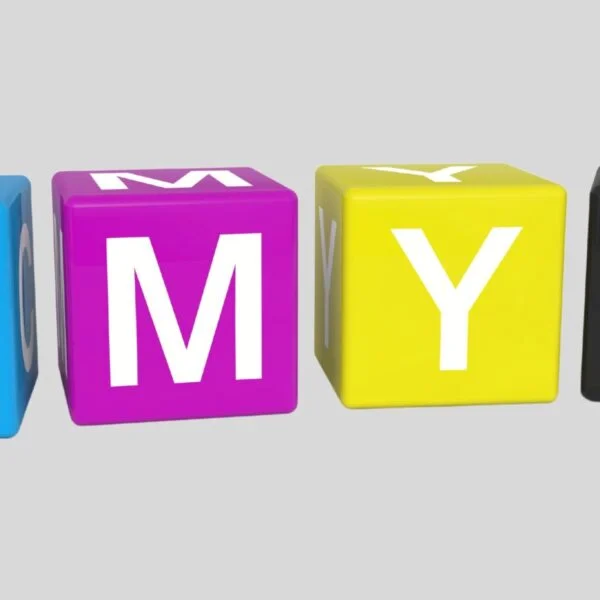CMYK: The Essential Guide for Understanding Color in Printing

In the printing, colours are not just a matter of choice but a complex science that affects the outcome of the printed materials. The CMYK colour model is at the heart of this science, serving as the standard for print processing. This guide delves into the intricacies of CMYK, explaining its importance and how it differs from its digital counterpart, RGB.
What is CMYK Colour Printing?
CMYK stands for Cyan, Magenta, Yellow, and Key (Black), the four ink colours used in the majority of colour printing. This method is known as subtractive mixing, where colours are subtracted from white light to create the desired hues.
How is it Different from RGB Colour Printing?
Unlike CMYK, RGB (Red, Green, Blue) is an additive colour model used for digital displays, where light is added together to create colors. RGB is used for electronic screens where light is emitted, while CMYK is used for printing where light is reflected.
Why is CMYK Used in Commercial Printing?
CMYK is used in commercial printing because it provides a wide range of colors with the use of only four inks. This efficiency is essential for cost control and consistency in mass production of printed materials.

Understanding CMYK Colors
What do the Letters CMYK Stand For?
The letters in CMYK represent the inks used in four-colour process printing: Cyan, Magenta, Yellow, and Key (Black). Each color of ink is printed in tiny dots that when combined, create the illusion of many more colors.
How are CMYK Colors Created?
CMYK colors are created through the process of halftoning, where dots of the four inks are printed in varying sizes and spacing. The overlapping of these dots creates a full spectrum of color to the human eye.
What is the Difference Between Process Colours and Spot Colours?
Process colors are mixed during the printing process itself through the use of CMYK inks. Spot colors, on the other hand, are pre-mixed inks used when a specific, consistent color is needed, often for brand colors.
Using CMYK Color Printing
How to Convert RGB Files to CMYK
To convert RGB files to CMYK, one can use software like Adobe Photoshop or Illustrator. This is done by opening the file and selecting ‘Convert to Profile’ or ‘Change Color Mode’ to CMYK.
Tips for Designing for CMYK Printing
When designing for CMYK printing, always preview your work in CMYK mode, consider color shifts that may occur, and use CMYK-optimized images and graphics.
Common Problems with CMYK Printing
Some common problems with CMYK printing include colour shifts, where colours do not print as they appear on the screen, and issues with color accuracy, especially for bright and vivid colors.
The Benefits of Using CMYK Colour Printing
CMYK colour printing allows for a wide range of colours with the use of only four inks, making it cost-effective and ideal for bulk printing.
When to Use CMYK Instead of RGB
CMYK should be used instead of RGB when the final product is a physical print, as it is tailored to reflect light rather than emit it like digital displays.
What are Some of the Challenges of Using CMYK Color Printing?
One of the challenges of using CMYK colour printing is ensuring colour accuracy, as the printed outcome may vary from the digital design due to the nature of color mixing in printing.
How Can I Ensure That My Colours Will Look Consistent When Printed?
To ensure colour consistency, use a calibrated monitor, work in a color-managed workflow, and consider soft proofing with a printed colour swatch.
